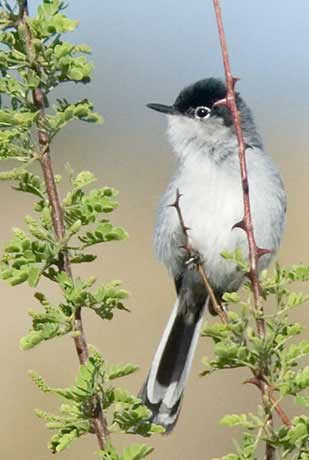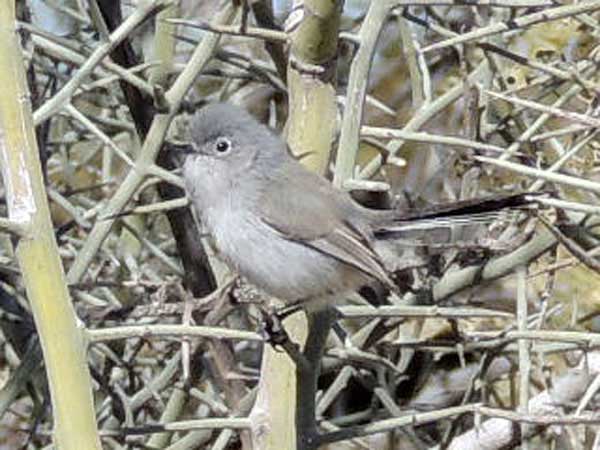Black-tailed Gnatcatcher
Polioptila melanura

Photographed by Robert Shantz at Lower Steeple Rock Canyon, Hidalgo County, New Mexico. This male has a distinctly black cap. Females lack the cap, and during the winter months the male's cap fades away.
This little Sonoran Desert bird has a lot of pizzazz with its sharp black, white and gray plumage. They seem hyperactive as they flit incessantly from twig to twig giving a sharp, raspy call, less cat-like than the similar-looking blue-gray gnatcatcher. Food is primarily small insects and spiders gleaned from the foliage. The long tail is mostly black - look especially on the underside of the tail (the blue-gray's tail is predominately white underneath). In winter plumage the black cap fades to dark gray.

This bird was foraging in a Graythorn shrub at Reach 11 Park in Phoenix, Arizona. 31 Jan, 2016. Females as well as non-breeding males lack the black cap on the head.
The Blue-gray Gnatcatcher, with which this bird can be confused, inhabits the Sonoran Desert during the winter months having migrated from the northern states and Canada. Blue-grays rarely venture far from water and so would be expected primarily in riparian habitats in the desert.